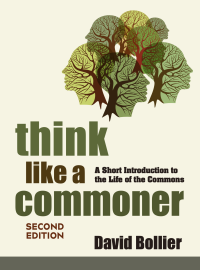Whenever a folk tradition becomes popular, you can be sure that a large company will try to appropriate it for itself. McDonald’s is masterful at co-oping the latest street trends in music. Disney has built its empire on claiming ownership in fairy tales and classic children’s literature. The question of the season is whether Coca-Cola is responsible for our modern-day images of Santa Claus.
This is a common mythology in many circles. Cultural theorist Rosemary Coombe notes in her book, The Cultural Life of Intellectual Properties (1998), that “until 1931, the old saint was a thin, dark man dressed in drab green or brown. His reincarnation as a plump, twinkling, jolly, white-bearded old chap in a red suit originated in a Coca Cola advertising campaign. Fortunately for North American children and commercial culture, the Coca-Cola Company did not claim trademark rights or copyright in the figure. Had they done so, to produce Santa’s likeness might also require authorization.”
But it turns out that Coca-Cola’s role in “re-inventing” Santa for the 20th century is partly a self-serving myth propagated by Coca-Cola itself. Barbara and David P. Mikkelson, who run the Urban Legends Reference Pages on the Web, explain why so many people believe this myth:
At the beginning of the 1930s, the burgeoning Coca-Cola company was still looking for ways to increase sales of their product during winter, then a slow time of year for the soft drink market. They turned to a talented commercial illustrator named Haddon Sundblom, who created a series of memorable drawings that associated the figure of a larger than life, red-and-white garbed Santa Claus with Coca-Cola. Coke’s annual advertisements — featuring Sundblom-drawn Santas holding bottles of Coca-Cola, drinking Coca-Cola, receiving Coca-Cola as gifts, and especially enjoying Coca-Cola — became a perennial Christmastime feature which helped spur Coca-Cola sales throughout the winter (and produced the bonus effect of appealing quite strongly to children, an important segment of the soft drink market).
Coca-Cola has happily built an ongoing public relations campaign around this mythology. This Christmas season the company is celebrating the 75th anniversary of the Sundblom Santa images, complete with an exhibit of past ads, at Lincoln Center in New York City. Years ago, Professor Coombe points out, Coca-Cola sponsored an exhibit at the Royal Ontario Museum in Canada called Santa: The Real Thing at the ROM. The point, of course, is to suggest that Coca-Cola is as much a part of Christmas as the Three Wise Men.
The Mikkelsons acknowledge that Coca-Cola helped popularize the modern-day image, but they stress that Coke did not invent our Santa:
The Santa image may have been standardized before Coca-Cola adopted it for their advertisements, but Coca-Cola had a great deal to do with establishing Santa Claus as a ubiquitous Christmas figure in America at a time when the holiday was still making the transition from a religious observance to a largely secular and highly commercial celebration. In an era before color television (or commercial television of any kind), color films, and the widespread use of color in newspapers, it was Coca-Cola’s magazine advertisements, billboards, and point-of-sale store displays that exposed nearly everyone in America to the modern Santa Claus image. Coca-Cola certainly helped make Santa Claus one of the most popular men in America, but they didn’t invent him.
Coca-Cola’s rival, White Rock, is not happy that Coke is claiming responsibility for Santa in its advertising and publicity, so it is now checking in with its own counter-publicity. It huffily points out that White Rock advertisements from the teens and 1920s featured jolly, ruddy-cheeked Santas in red outfits. According to BevNet, an online journal for the beverage industry, “The Claus that refreshes was actually introduced two decades earlier by White Rock Beverages. The White Rock Collector’s Association has posted several White Rock ‘Santa’ ads at http://www.whiterocking.org/santa.html, including a 1915 ad in Collier’s and several from the 1920s in Life magazine, featuring Kris Kringle enjoying the taste of White Rock.” According to Gerald Bowler, author of Santa Claus: A Biography, “The Coke Santa was in no way ground-breaking, nor was the Atlanta company even the first purveyor of soda to use the gift-bringer in its ads. That honor belongs to White Rock.”
I especially like the comment by Larry Bodkin, president of White Rock Beverages: “For Coke to perpetuate this Christmas myth for so long is abominable,” said Bodkin. “They have co-opted Claus and it wouldn’t surprise me to hear that they’re trying to claim that they created the Easter Bunny, as well.”
Bodkin wants Coca-Cola to publicly apologize for its inflated claims or divulge its secret recipe to White Rock. “You can’t beat the feeling of telling the truth. These upstarts at Coke owe it to the American people to admit that White Rock and Santa Claus is the real thing. Only then can people have a Coke and a smile,” says Bodkin.
Gentlemen, gentlemen! Perhaps both of your companies could use a little humility — which is entirely appropriate for the season — and admit that Santa Claus does not belong to any privately owned enterprise. Santa belongs to all of us. He is a creature of the commons.
Oops…this just in: BBC News reports that children visiting Disney World in Florida were mistaking James Worley, a portly visitor with a beard, red shirt and red hat, for Santa Claus. Disney officials told Worley to “stop the impersonation or get out of the park. They said they wanted to preserve the magic of Santa,” according to the BBC. Worley said that Disney officials told him that “Santa was considered a Disney character.”
And so it goes, that large entertainment and retail corporations falsely claim to be the proper stewards of Santa Claus folklore. It’s all a fight over whether Santa is the Real Thing…or the real thing (CC, Creative Commons). I know which Santa I believe in! Merry Christmas!











Recent comments